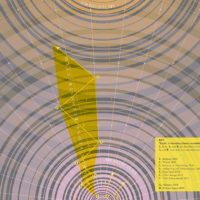Scandalous Artefacts: Visual and Analogical Practice Between Architecture and Archaeology
If architecture is a design-centered discipline which proceeds by suggesting propositional constructions then, this thesis argues, archaeology also designs, but in the form of reconstructions. This thesis proposes that whilst practitioners of these disciplines generally purport to practice in future-facing mode (for architecture) and in past-facing-mode (for archaeology), elements of architecture and archaeology also resemble one another. This thesis speculates that some of these resemblances have remained explicit and revealed whilst others have become occluded with time, but that all such resemblances share homological similarities of interconnected disciplinary origin.
Available in the space between disciplines related through homology, is a logically underpinned, visually analogical practice. This interdisciplinary practice springs from Barbara Stafford’s notion of an “analogical universe” using the abductive logic of C. S. Peirce to rationally support it. Defined as “scandalous,” a term derived from Claude Lévi-Strauss, this practice which I term ‘propositional reconstruction’ defines my approach to design and historical analysis in this thesis.
The thesis is constructed across “sites of encounter,” through which my visually analogical practice is informed, consisting of historical analysis and design in the form of propositional reconstructions.
The prologue and epilogue describe the work of Raphael at Villa Madama, which, I argue, provides a historical model for practising between architecture and archaeology. Chapter 1. Reconstruction introduces the key aims, objectives, context and methodology of the thesis. Chapter 2. Discipline and 3. Undiscipline provide an overview of architecture and archaeology as design disciplines whose resemblances, they posit, are expressed through drawing practices. Chapter 4. Resemblance and Chapter 5. The Analogist unpick the logical systems which I argue underpin interdisciplinary practice. Chapter 6. London Stone Reconstructed describes my own visually analogical practice for working between architecture and archaeology while Chapter 7. Chimaera closes with a propositional reconstruction relating to London Stone described through interdisciplinary drawings.
Such is the transformative power of metaphor; and of analogy in particular; its unique ability to carry meaning, anaphorically, across epistemes and, for the purposes of this thesis, disciplinary epistemes, forging, “the most beautiful bond possible” the bond of analogy. The logic and the sympathetic magic of analogy underpins the arguments of this thesis as it underpins the interdisciplinary structures it describes and employs. Throughout, this thesis will describe experimental practices that I performed in the space provided by these analogical networks. Working, in fact, directly upon London Stone, using it as a common locus for the interconnected disciplines of architecture and archaeology and their shared drawing practices – disciplines which have, in various ways, claimed the Stone as their own.
[…]
It is a central contention of this thesis that in theoretical and applied senses the disciplines of architecture and archaeology are both propositional; that although they employ practices typically termed design and reconstruction, both of these terms in fact describe and occlude forms of propositional making. The implications of this observation are established across a series of chapters forming a written investigation into the possibilities of new practices provided by relooking at current and historical practices in architecture and archaeology. These texts and images are themselves assembled through my own visual analogical practice across a number of ‘sites of encounter.’
Alessandro Zambelli, Scandalous Space: Between Architecture and Archaeology (Baunach: AADR Spurbuchverlag, 2019).
My specialist teaching, supervisory and research interests focus on architectural interdisciplinarity and also on notions of commons and practices of commoning. My commons research is the subject of a major AHRC award and my work on architectural interdisciplinarity, particularly with archaeology and anthropology, is the subject of a number of publications: ‘Occlusions of the Operational Sequence’ was published last year in Architecture and Anthropology (ed. Adam Jasper, Routledge 2018) and Scandalous Space: between architecture and archaeology has just been published by Spurbuchverlag (2019).
As a co-investigator on Wastes and Strays: the past, present and future of English urban commons, a 3-year AHRC-funded interdisciplinary research project, my research draws together historical, archaeological and legal aspects of urban commons and uses that knowledge to engage with local communities across England. Led by Newcastle Law School, Wastes and Strays is partnered by, amongst others, the National Trust and the Open Spaces Society.











